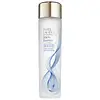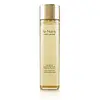What's inside
What's inside
 Key Ingredients
Key Ingredients

 Benefits
Benefits

 Concerns
Concerns

No concerns
 Ingredients Side-by-side
Ingredients Side-by-side

Water
Skin ConditioningBifida Ferment Lysate
Skin ConditioningPropanediol
SolventPEG-75
HumectantLactobacillus Ferment
Skin ConditioningAcetyl Hexapeptide-8
HumectantAcetyl Glucosamine
Skin ConditioningSodium Hyaluronate
HumectantAnthemis Nobilis Flower Extract
MaskingCaffeine
Skin ConditioningDipotassium Glycyrrhizate
HumectantHydrolyzed Rice Extract
Skin ConditioningBetaine
HumectantMaltodextrin
AbsorbentCarbomer
Emulsion StabilisingTromethamine
BufferingCitric Acid
BufferingTrehalose
HumectantButylene Glycol
HumectantCaprylyl Glycol
EmollientPPG-5-Ceteth-20
EmulsifyingPentylene Glycol
Skin ConditioningDisodium EDTA
Sodium Citrate
BufferingPhenoxyethanol
PreservativePotassium Sorbate
PreservativeWater, Bifida Ferment Lysate, Propanediol, PEG-75, Lactobacillus Ferment, Acetyl Hexapeptide-8, Acetyl Glucosamine, Sodium Hyaluronate, Anthemis Nobilis Flower Extract, Caffeine, Dipotassium Glycyrrhizate, Hydrolyzed Rice Extract, Betaine, Maltodextrin, Carbomer, Tromethamine, Citric Acid, Trehalose, Butylene Glycol, Caprylyl Glycol, PPG-5-Ceteth-20, Pentylene Glycol, Disodium EDTA, Sodium Citrate, Phenoxyethanol, Potassium Sorbate
Water
Skin ConditioningButylene Glycol
HumectantIsopentyldiol
HumectantDiglycerin
HumectantDipropylene Glycol
HumectantGlycerin
HumectantSwertia Chirata Extract
HumectantNarcissus Tazetta Bulb Extract
AstringentLaminaria Digitata Extract
Skin ProtectingPorphyridium Cruentum Extract
Skin ConditioningTocopheryl Acetate
AntioxidantSodium Hyaluronate
HumectantCamellia Sinensis Leaf Extract
AntimicrobialMyrtus Communis Leaf Extract
PerfumingSigesbeckia Orientalis Extract
Skin ConditioningPalmaria Palmata Extract
Skin ProtectingHydrolyzed Rice Extract
Skin ConditioningCucumis Sativus Fruit Extract
EmollientPyrus Malus Fruit Extract
Skin ConditioningScutellaria Baicalensis Root Extract
AstringentPolygonum Cuspidatum Root Extract
AntioxidantHydrolyzed Wheat Protein
Skin ConditioningSaccharomyces Lysate Extract
HumectantLactobacillus Ferment
Skin ConditioningCaffeine
Skin ConditioningCaprylyl Glycol
EmollientAcetyl Hexapeptide-8
HumectantPPG-26-Buteth-26
Skin ConditioningSucrose
HumectantDipotassium Glycyrrhizate
HumectantGold
Cosmetic ColorantSaccharum Officinarum Extract
MoisturisingGlycine Soja Protein
EmulsifyingLactis Proteinum
Skin ConditioningPearl Powder
Acetyl Glucosamine
Skin ConditioningSaccharide Isomerate
HumectantAscorbyl Glucoside
AntioxidantEthylhexylglycerin
Skin ConditioningPotassium Hydroxide
BufferingPPG-6-Decyltetradeceth-30
EmulsifyingPolymethylsilsesquioxane
Citric Acid
BufferingHexylene Glycol
EmulsifyingPEG-40 Hydrogenated Castor Oil
EmulsifyingParfum
MaskingSodium Metabisulfite
AntioxidantSodium Sulfite
PreservativeDisodium EDTA
Sodium Citrate
BufferingPotassium Sorbate
PreservativePhenoxyethanol
PreservativeWater, Butylene Glycol, Isopentyldiol, Diglycerin, Dipropylene Glycol, Glycerin, Swertia Chirata Extract, Narcissus Tazetta Bulb Extract, Laminaria Digitata Extract, Porphyridium Cruentum Extract, Tocopheryl Acetate, Sodium Hyaluronate, Camellia Sinensis Leaf Extract, Myrtus Communis Leaf Extract, Sigesbeckia Orientalis Extract, Palmaria Palmata Extract, Hydrolyzed Rice Extract, Cucumis Sativus Fruit Extract, Pyrus Malus Fruit Extract, Scutellaria Baicalensis Root Extract, Polygonum Cuspidatum Root Extract, Hydrolyzed Wheat Protein, Saccharomyces Lysate Extract, Lactobacillus Ferment, Caffeine, Caprylyl Glycol, Acetyl Hexapeptide-8, PPG-26-Buteth-26, Sucrose, Dipotassium Glycyrrhizate, Gold, Saccharum Officinarum Extract, Glycine Soja Protein, Lactis Proteinum, Pearl Powder, Acetyl Glucosamine, Saccharide Isomerate, Ascorbyl Glucoside, Ethylhexylglycerin, Potassium Hydroxide, PPG-6-Decyltetradeceth-30, Polymethylsilsesquioxane, Citric Acid, Hexylene Glycol, PEG-40 Hydrogenated Castor Oil, Parfum, Sodium Metabisulfite, Sodium Sulfite, Disodium EDTA, Sodium Citrate, Potassium Sorbate, Phenoxyethanol
 Reviews
Reviews

Ingredients Explained
These ingredients are found in both products.
Ingredients higher up in an ingredient list are typically present in a larger amount.
Acetyl Glucosamine is an antioxidant and humectant. It is an amino acid sugar and is naturally found in our skin.
The cool thing about this ingredient? It helps the skin produce hyaluronic acid and boost hydration. It also has antioxidant benefits to protect skin cells.
When paired with niacinamide, Acetyl Glucosamine has been shown to be effective at reducing discoloration.
Learn more about Acetyl GlucosamineAcetyl Hexapeptide-8, commonly known as Argireline or Acetyl Hexapeptide-3, is a popular peptide in skincare. It’s often referred to as a “Botox-like” ingredient because it helps reduce muscle movement.
By relaxing these micro-movements, Argireline may help minimize the appearance of fine lines and wrinkles. That said, it’s not as powerful as Botox, and research on its long-term effectiveness is still limited.
Beyond smoothing, Argireline may also support collagen production. Collagen is the protein that helps keep your skin firm, bouncy, and well-hydrated by strengthening the skin barrier.
So while Argireline isn’t a miracle fix, it can be a helpful addition to a routine focused on both prevention and skin health.
Read more about other common types of peptides here:
Learn more about Acetyl Hexapeptide-8Butylene Glycol (or BG) is used within cosmetic products for a few different reasons:
Overall, Butylene Glycol is a safe and well-rounded ingredient that works well with other ingredients.
Though this ingredient works well with most skin types, some people with sensitive skin may experience a reaction such as allergic rashes, closed comedones, or itchiness.
Learn more about Butylene GlycolCaffeine is most associated with coffee, tea, and cacao. In skincare, it helps with calming inflammation and is rich in antioxidants.
While caffeine is used to treat cellulite and and dark circles, further studies are needed to prove this. It has been believed to help with these skin conditions due to its ability to dilate blood vessels and increase blood flow.
Some studies are looking into caffeine's ability to protect against UV rays.
Learn more about CaffeineCaprylyl Glycol is a humectant and emollient, meaning it attracts and preserves moisture.
It is a common ingredient in many products, especially those designed to hydrate skin. The primary benefits are retaining moisture, skin softening, and promoting a healthy skin barrier.
Though Caprylyl Glycol is an alcohol derived from fatty acids, it is not the kind that can dry out skin.
This ingredient is also used as a preservative to extend the life of products. It has slight antimicrobial properties.
Learn more about Caprylyl GlycolCitric Acid is an alpha hydroxy acid (AHA) naturally found in citrus fruits like oranges, lemons, and limes.
Like other AHAs, citric acid can exfoliate skin by breaking down the bonds that hold dead skin cells together. This helps reveal smoother and brighter skin underneath.
However, this exfoliating effect only happens at high concentrations (20%) which can be hard to find in cosmetic products.
Due to this, citric acid is usually included in small amounts as a pH adjuster. This helps keep products slightly more acidic and compatible with skin's natural pH.
In skincare formulas, citric acid can:
While it can provide some skin benefits, research shows lactic acid and glycolic acid are generally more effective and less irritating exfoliants.
Most citric acid used in skincare today is made by fermenting sugars (usually from molasses). This synthetic version is identical to the natural citrus form but easier to stabilize and use in formulations.
Read more about some other popular AHA's here:
Learn more about Citric AcidDipotassium Glycyrrhizate comes from licorice root.
Extracts of licorice have demonstrated to have antibacterial, anti‐inflammatory, antiviral, antioxidant properties.
One component, glabridin, has extra potent antioxidant and soothing properties. It has also been found to block pigmentation from UVB rays in guinea pigs.
Licorice Root also contains a flavonoid. Flavonoids are a natural substance from in plants. Flavonoids also have antioxidant properties.
Another component, glycyrrhizin, has been found to have anti-inflammatory and antimicrobial benefits. This may make licorice root extract effective at treating acne. However, more research is needed to support this.
Liquiritin is one of the flavone compounds found in licorice. It has been found to help lighten skin by preventing tyrosinase from reacting with tyrosine. When the two react, protein is converted to melanin. Melanin is the substance in your body that gives your features pigmentation.
Licorice root is native to Southern Europe and Asia. It has been used in traditional Chinese medicine to help with respiratory issues.
Learn more about Dipotassium GlycyrrhizateDisodium EDTA plays a role in making products more stable by aiding other preservatives.
It is a chelating agent, meaning it neutralizes metal ions that may be found in a product.
Disodium EDTA is a salt of edetic acid and is found to be safe in cosmetic ingredients.
Learn more about Disodium EDTAHydrolyzed rice protein is a plant-derived ingredient with hydrating, antibacterial and anti-aging properties.
This fine, white-ish powder is protein rich. The protein is hydrolyzed into smaller peptides and amino acids.
It has the following skin benefits:
In hair care, this ingredient can help reduce breakage, enhance shine, and reduce frizz.
Read more about the benefits of rice extract here.
Learn more about Hydrolyzed Rice ExtractLactobacillus Ferment is created by fermenting the Lactobacillus bacteria. It helps keep our skin's natural barrier and microbiome healthy.
Studies show lactobacillus ferment to be effective at repairing the skin barrier. Having a healthy skin barrier helps keep your skin healthy and hydrated. It also protects against bad bacteria.
As a probiotic/prebiotic/postbiotic, Lactobacillus ferment can help regular our natural biome. In fact, one study found a lack of diversity in our natural skin biome can trigger acne.
Learn more about Lactobacillus FermentPhenoxyethanol is a preservative that has germicide, antimicrobial, and aromatic properties. Studies show that phenoxyethanol can prevent microbial growth. By itself, it has a scent that is similar to that of a rose.
It's often used in formulations along with Caprylyl Glycol to preserve the shelf life of products.
Potassium Sorbate is a preservative used to prevent yeast and mold in products. It is commonly found in both cosmetic and food products.
This ingredient comes from potassium salt derived from sorbic acid. Sorbic acid is a natural antibiotic and effective against fungus.
Both potassium sorbate and sorbic acid can be found in baked goods, cheeses, dried meats, dried fruit, ice cream, pickles, wine, yogurt, and more.
You'll often find this ingredient used with other preservatives.
Learn more about Potassium SorbateSodium Citrate is the sodium salts of citric acid. In skincare, it is used to alter pH levels and acts as a preservative.
Its main functions are to maintain the pH of a product and neutralize metal ions.
The acidity of our skin is maintained by our glands and skin biome; normal pH level of skin is slightly acidic (~4.75-5.5).
Being slightly acidic allows our skin to create an "acid mantle". This acid mantle is a thin barrier that protects our skin from bacteria and contaminants.
Learn more about Sodium CitrateSodium Hyaluronate is hyaluronic acid's salt form. It is commonly derived from the sodium salt of hyaluronic acid.
Like hyaluronic acid, it is great at holding water and acts as a humectant. This makes it a great skin hydrating ingredient.
Sodium Hyaluronate is naturally occurring in our bodies and is mostly found in eye fluid and joints.
These are some other common types of Hyaluronic Acid:
Learn more about Sodium HyaluronateWater. It's the most common cosmetic ingredient of all. You'll usually see it at the top of ingredient lists, meaning that it makes up the largest part of the product.
So why is it so popular? Water most often acts as a solvent - this means that it helps dissolve other ingredients into the formulation.
You'll also recognize water as that liquid we all need to stay alive. If you see this, drink a glass of water. Stay hydrated!
Learn more about Water